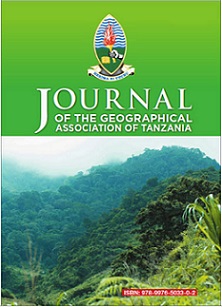Analysis of Geographical Accessibility to Healthcare Facilities Using Geospatial Techniques: The Case of Peri-urban Dwellers in Mbeya City
Abstract
In spite of the tremendous achievements in the quality and quantity of health services attained globally, healthcare provision in developing countries remains a serious problem. Accessibility issues have been noted in peri-urban areas and measures to improve physical access to health services continue. This paper offers a comprehensive and analytical methodology of analysing geographical accessibility of healthcare facilities using geospatial techniques. The study employed ArcGIS Network Analyst to build a road network dataset and measure the shortest network-distance and travel-time to the closest healthcare via road networks. Walking speed was also assigned as 3km/hr throughout the whole network. Public transport speed limits of 30km/hr were assigned based on the roads speed limits of Mbeya City, without considering road condition and topography. A total of 70 healthcare facilities and 95 households ' settlement points (incidents) were loaded as input in the ArcGIS analyst tool. The findings show that most health facilities are not easily accessible by walking; and that there is a poor spatial accessibility to health facilities and wellbeing among residents in the peri-urban area. Thus, the local government authority is advised to improve the road infrastructure to enhance accessibility to sparsely distributed healthcare facilities.
Keywords: accessibility, geographical accessibility, healthcare, network analysis, population.


